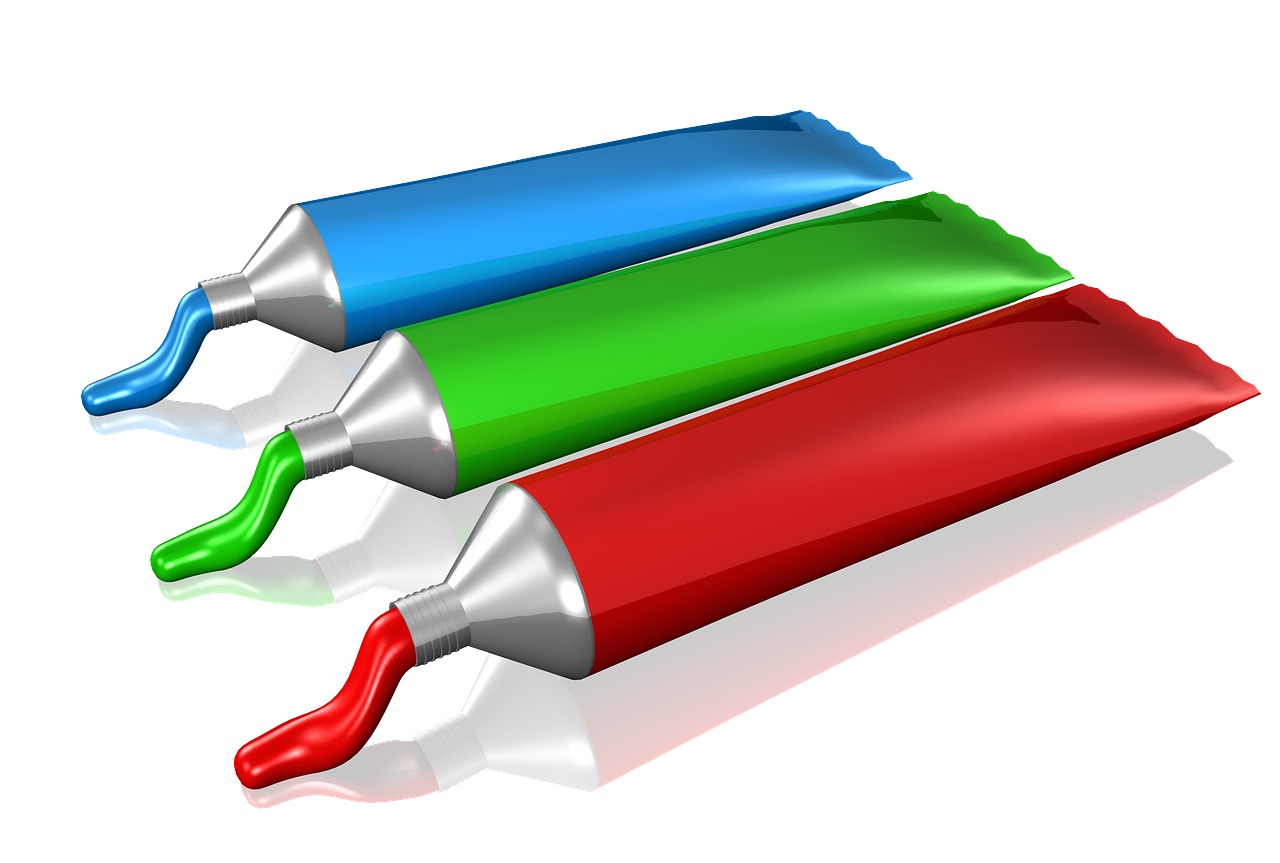There’s nothing more frustrating to an artist than working hard on a painting and having it ruined due to careless mistakes. One such mistake occurs when a painter attempts to mix oil and acrylic paint.
It is not a good idea to mix oil-based and water-based paints. The main problem is that they have different drying times. Oil paint is slower drying and has a different consistency than acrylic paint. When mixed together, the different drying times and properties can cause cracking.
What will it take to successfully mix oil and acrylic paint? To help you out, I’ve created this resourceful post that includes crucial information about how to mix the two painting mediums together.
Related Reading
Can You Add Water to Acrylic Paint?
Why Did Acrylic Tank Manufacturing Close?
Phenomenal Properties of Acrylic Paint

1) Water-Soluble
Acrylic paint is made up of a synthetic resin binder that is soluble in water. This emulsion makes it water-soluble or water-based. The resin is composed of acrylic monomers. For example, when the paint is wet, acrylic paint can be easily diluted or mixed with water. This water-solubility property makes acrylic paint versatile and easy to use plus the possibility to use it in a variety of ways , including as an additive to other mediums is higher.
2) Dries Quickly
Acrylic paint dries quickly because it contains a large amount of solvent and does not require heat setting or curing like some other mediums do. The drying time significantly depends on the thickness of the layer and the temperature of the room where you’re working in, but most acrylic paintings dry within a few hours or days at room temperature.
Note: The fast-drying nature of acrylics makes them ideal for artists who prefer to work quickly and want to add layers or glaze colors without having to wait for longer periods of time. Since acrylic paints dry so fast, it’s possible to correct mistakes more easily than with slower-drying mediums like oils paints. Furthermore, acrylic paints pretty much last a longer time. So, they totally worth your penny.
3) Easy to Clean
Now, let’s talk about cleaning. We all know that is an up-hill task. However, acrylic paints can be easily cleaned up with just water.
It does not require the use of solvents such as turpentine or mineral spirits , which can be toxic and emit strong odors. Also, acrylic paints also have a lower environmental impact since they don’t release toxic fumes or chemicals during the painting process, making them a safer and more convenient choice for artists.
This water-based nature of acrylic paint makes them more accessible to people are sensitive or have allergies. It is safe to say that acrylic paints are not toxic at all
Recommended Posts: Is Acrylic Paint Toxic?, Is Acrylic Paint Toxic to Dogs?
Understanding the Properties of Oil-Based Paint
1) Resistance to Water
Oils are thick and slow to dry, which makes them ideal for painting on wet plaster. This type of paint also has a high resistance to water, which makes them useful for painting in damp conditions.
2) Low- Tinting Strength
Oil- based paints have a relatively low tinting strength, which means they do not change the color of other pigments when mixed . This is one reason why they are so popular with painters working with other colors.
3) Transparent
Talking of transparency, oil-based paints are highly transparent, so they allow the color of light to shine through the pigment layer. This quality makes oils particularly useful for glazing techniques and creating highlights.
Differences Between Oil and Acrylic Paints
| Oil Paints | Acrylic Paints | |
|---|---|---|
| Composition | Pigment suspended in oil, usually linseed oil | Pigment suspended in water-based acrylic polymer |
| Drying Time | Slow drying, can take days or weeks to dry completely | Fast drying, can dry in minutes to a few hours |
| Thinning | Must be thinned with solvents such as turpentine or mineral spirits | Can be thinned with water or acrylic mediums |
| Color Shift | The color remains consistent as it dries | The color can dry darker than when it’s wet |
| Application | Can be applied in thick layers and blended easily due to slow drying time | Can be applied in thin layers, dries quickly, and can’t be blended easily once it’s dry |
| Finish | Has a glossy finish when wet, but can be matte or glossy once it dries | Dries to a consistent matte or glossy finish |
| Clean Up | Requires solvents such as turpentine or mineral spirits for cleanup | Can be cleaned up with soap and water |
Can You Mix Oil and Acrylic Paint?

The two types of paints are very different. Acrylic is water-based and oil is oil-based. These paints don’t mix together well because they’re made from different ingredients and have different consistencies. Mixing oil and acrylic paints is also generally not recommended because they have different behaviours. Here are some reasons why you might not want to mix the two:
- Chemical Incompatibility: Oil and acrylic paints are chemically different, which means that they can react with each other in unexpected ways. This can result in problems like cracking, peeling, or flaking.
- Drying Time: Oil paint dries more slowly than acrylic paint. If you mix the two, the oil paint will take longer to dry, which can cause the painting to crack or become unstable.
- Adhesion: Acrylic paint adheres well to many surfaces, but it may not adhere as well to surfaces that have been coated with oil paint. This can cause the acrylic paint to peel or flake off.
- Color Mixing: The color mixing of oil and acrylic paints can also be problematic, as the colors may not blend properly and may even separate over time.
For these reasons, it’s generally best to stick to using one type of paint at a time and not to mix them. So if you mix them together, the final result will likely be chunky and unevenly colored because the two types of paint won’t dry at the same rate. However, if you go ahead to mix oil and acrylic paint, here’s how to do it right;
How to Mix Oil and Acrylic Paints?
While it is generally not recommended to mix oil and acrylic paints, it is possible to do so with proper precautions. Here are the steps for mixing oil and acrylic paints:
- First things first-choose a surface to mix the paints on that is not porous, such as a palette made of glass or plastic.
- Prepare the surface by cleaning it with soap/water and dry it thoroughly. You can also sand it.
- In a palette, squeeze a small amount of oil paint onto the palette and add a small amount of acrylic paint to it.
- Use a palette knife to mix the two paints together, making sure to blend them evenly.
- Add a small amount of medium to the mixture if desired to improve the flow and consistency of the paint.
- Test the paint on a separate surface to ensure it has the desired texture, consistency and appearance.
- Use it as desired on your project.
- After painting, clean the palette and any tools used with soap and water, and dispose of any excess mixed paint.
Keep in mind that while mixing oil and acrylic paints can result in a less stable paint mixture that may crack or peel over time. Additionally, some combinations of oil and acrylic paints may not adhere well to certain surfaces. It is important to experiment cautiously and always test the mixture on a small area before applying it to a larger surface.
Can You Paint Acrylic Over Oil Paint?
Acrylics and oils are two different types of paint, so they will react differently depending on the application. Acrylics are water-based paints, so they will not be able to bond with oil paints. The reason for this is that acrylic paint is water-based and flexible, while oil paint is solvent-based and rigid. When acrylic paint is applied over oil paint, it will not adhere properly, and can easily separate from the surface, especially if there is flexing.
However, if the surface is properly primed and prepared, it is possible to paint acrylic over oil without any issues. Acrylics also have a tendency to bleed through the oil layer and show up as a white line. This can be fixed by priming your canvas or wood panel with gesso before applying the acrylics.
Can You Paint Oil Over Acrylic?
It is generally considered safe to paint oils over acrylics, as the oil paint will adhere well to the dry acrylic surface. However, it is not recommended to paint acrylics over oils as we have seen in the previous paragraphs because the acrylic paint may not adhere well to the oily surface, leading to cracking or peeling of the paint over time.
If you want to paint oil over acrylic layered paint, go a head. Oil paints are more flexible. But, you will have to wait until the acrylic paint has completely dried and cured, which can take several hours or even days . It is also recommended to always apply a primer before painting with oil. However, it is generally easier to use one type of paint for a project, rather than trying to mix different types.
What Happens When You Mix Oil With Acrylic Paint?
Mixing oil paint and acrylic paint will cause some issues in the paint film, as the two types of paint have different properties .
One of the main reasons for this is that acrylic paint dries quickly, while oil paint takes much longer to dry. When you mix these two together, acrylic paint will dry too quickly, leaving the oil paint underneath still wet. This can cause the top layer of acrylic paint to crack, peel or flake off over time. ( I’m sure you don’t want this).
Another reason is that oil paint has a different surface tension than acrylic paint, which can cause the two to separate and repel each other. This can also result in uneven color and texture on your painting surface.
Because of these issues, it is generally not recommended to mix oil and acrylic paints. Alternatively, you can use a layer of gesso or other barrier between the layers to help the two types of paint adhere better to each other.
Thinning Acrylic Paint With Oil ?

No, it is not recommended to thin acrylic paint with oil. Acrylic paint is a water-based paint , which means that it is designed to be thinned and cleaned up with water. On the other hand, oil just as its name is oil -based and is a completely different type of medium that is not compatible with acrylic paint. Thinning acrylic paint with oil can result in an uneven consistency, and it may also cause the paint to crack or peel over time
There are several options to thin acrylic paint, such as;
- Water: Water is the most common and inexpensive medium for thinning acrylic paint. It can be added to the paint in small increments until the desired consistency is achieved.
- Acrylic Medium: Acrylic medium is specifically designed for thinning and modifying acrylic paints. You can use to improve the flow and increase the overall transparency of the paint. (I personally love the Mont Marte Premium Acrylic Flow Medium for its colour intensity and vibrancy)
- Flow improver: Flow improver is also another type of medium that can be used to thin acrylic paint. It is designed to improve the flow of the paint without changing its consistency or color. The Winsor & Newton 3030937 Flow Improver is perfect for this.
- Retarder: This thinner slows down the drying time of acrylic paint, which can help to prevent the paint from drying out on the palette or brush. It can also be used to thin the paint, although it is not as effective as water or acrylic medium( The Golden Acrylic Retarder is one of the best in the market, totally worth it)
- Isopropyl alcohol: Isopropyl alcohol can be used to thin acrylic paint, but it should be used sparingly as it can break down the binder in the paint and cause it to lose its adhesive properties.
Side Note: When thinning acrylic paint, it’s important to add the medium in small increments and mix well to achieve the desired consistency without losing the pigment or adhesion properties of the paint.
Which Is Better for Beginners Oil or Acrylic Paint?
Both oil and acrylic paints have their advantages and disadvantages, but many artists recommend acrylics for beginners. Acrylics are easier to work with because they dry quickly, are water-soluble, and have a more forgiving nature. They can be layered and blended easily, and mistakes can be easily corrected by painting over them.
Additionally, acrylics are less toxic and do not require solvents, making them a safer choice for beginners. On the other hand, oils require more time to dry and can be more challenging to work with, but they offer a depth and richness of color that some artists prefer. Ultimately, the choice between oil and acrylic paint depends on personal preference and artistic goals.
Frequently Asked Questions
Can You Mix Oil and Acrylic Paint?
While it is technically possible to mix oil and acrylic paints together, it is not recommended due to their different properties and behaviors. Mixing the two paints can lead to issues such as cracking, peeling, or flaking. It is generally best to use one type of paint at a time, rather than mixing them together.
Can You Use Acrylic Paint with Oils?
The two types of paint do not mix well. Acrylic paint dries quickly and does not adhere well to oily surfaces, which can cause cracking and flaking over time.
Conclusion
So, there you have it. it is generally not recommended to mix oil and acrylic paints. Mixing the two may result in a variety of issues, including poor adhesion, flaking, and cracking. It’s best to use each medium separately, following the recommended techniques and materials for each one. By doing so, you can achieve the best possible results and create beautiful works of art/project.
SOURCES






